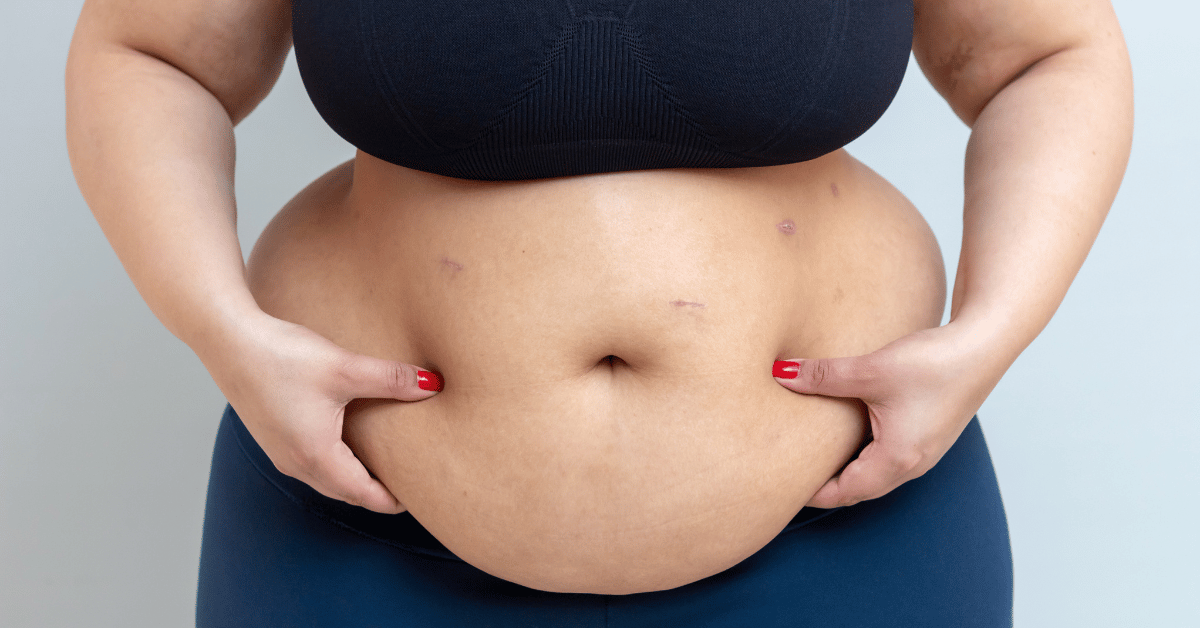The Truth About Liposuction: Does It Permanently Remove Belly Fat?
Jul-30-2025

The dream of a flat, toned stomach is one of the most common aesthetic goals for men and women alike. We try diets, commit to countless crunches, and log hours on the treadmill, yet for many, a stubborn layer of belly fat persists. It’s no surprise, then, that abdominal liposuction is one of the most sought-after cosmetic procedures worldwide. It presents the alluring promise of a quick, effective solution to a lifelong struggle.
This leads to the single most important question that prospective patients ask: "Does liposuction permanently remove belly fat?"
The answer is a crucial, two-part concept that every patient must understand: Yes, it does... and no, it doesn't.
This might sound contradictory, but it's the fundamental truth of the procedure. The fat cells that are physically removed during liposuction are gone for good. They will not grow back. However, this is not a magical immunity card against future weight gain. Understanding this duality is the key to achieving beautiful, long-lasting results and knowing if liposuction is the right investment for you.
This in-depth guide will explore the science behind fat removal, the critical difference between the types of belly fat, how your body can change after the procedure, and the vital role you play in the permanence of your results.
Understanding Belly Fat: Not All Fat is Created Equal
Before we can talk about removing belly fat, we must understand that there are two distinct types, and liposuction can only treat one of them.
1. Subcutaneous Fat (The "Pinchable" Fat)
This is the soft, jiggly layer of fat that lies just beneath the surface of your skin. It's the fat you can pinch with your fingers. This layer acts as an energy store, insulates your body, and protects you from physical shock. When you struggle with "love handles," a "muffin top," or a general softness around your midsection, you are dealing with subcutaneous fat.
Crucially, subcutaneous fat is the only type of fat that can be targeted and removed with liposuction.
2. Visceral Fat (The "Hidden" Fat)
This is a much deeper, firmer layer of fat that is stored within the abdominal cavity, packed around your vital organs like the liver, pancreas, and intestines. You cannot pinch visceral fat. A person can be relatively thin on the outside but still have a high amount of this dangerous internal fat. It's what contributes to a hard, protruding "beer belly." High levels of visceral fat are strongly linked to serious health problems, including type 2 diabetes, heart disease, high blood pressure, and certain cancers.
Visceral fat cannot be removed by any surgical procedure, including liposuction or a tummy tuck. It can only be reduced through consistent lifestyle changes: a healthy diet, regular cardiovascular exercise, stress management, and adequate sleep.
A skilled cosmetic surgeon will assess both types of fat during your consultation. If a significant portion of your abdominal size is due to visceral fat, they will explain the limitations of what liposuction can achieve for you.
How Liposuction Works: The Science of Fat Cell Removal
To grasp why liposuction is permanent, you need to understand how your body stores fat. As adults, we have a relatively fixed number of fat cells. When you gain weight, these existing fat cells don't multiply in great numbers; instead, they expand in size, like tiny balloons being inflated. When you lose weight, they shrink.
Liposuction physically and permanently alters this equation in the treated area. The procedure works as follows:
-
Small, discreet incisions are made in the target area.
-
A sterile fluid solution is often infused to numb the area and shrink blood vessels, which minimizes bleeding and bruising.
-
A thin, hollow tube called a cannula is inserted through the incisions.
-
The surgeon skillfully moves the cannula back and forth to break up the subcutaneous fat deposits.
-
The dislodged fat is then suctioned out of the body using a surgical vacuum or syringe.
The procedure is a form of body contouring or sculpting. The surgeon is strategically removing fat cells to reshape the abdomen and create a smoother, flatter, more defined silhouette.
The "Yes" - Why Liposuction Results Are Permanent
The permanency of liposuction lies in the fact that it physically removes fat cells from your body. Once those cells are suctioned out, they are gone forever. Your body does not regenerate new fat cells in the treated area to replace them.
This means the abdomen, or any treated area, will now have fewer fat cells than it did before. The fundamental architecture of your body's fat storage in that region has been permanently changed.
What does this mean for you long-term? It means that if you maintain a stable weight, your new, sculpted contour will last indefinitely. Furthermore, even if you gain a small or moderate amount of weight in the future, your abdomen will likely accumulate less fat relative to other parts of your body because there are simply fewer cellular "containers" available for storage in that area. Your improved proportions tend to hold true.
The "No" - How and Why Fat Can "Come Back"
This is the part of the equation that requires your active participation. While the removed fat cells are gone, liposuction is not a force field against the consequences of a poor lifestyle. Here's how your results can be compromised:
1. The Remaining Fat Cells Can Still Expand
Liposuction does not—and should not—remove all the fat cells from your abdomen. A thin, healthy layer of subcutaneous fat is necessary for a smooth, natural appearance and normal bodily function. These remaining fat cells are still fully capable of expanding if you consume more calories than your body burns. If you gain 10, 20, or 30 pounds, those remaining cells will swell, and your belly will get bigger again.
2. The Critical Concept of Fat Redistribution
This is the most misunderstood aspect of post-liposuction weight gain. Imagine your body has a preferred list of places to store fat, with your abdomen being at the top. After liposuction, you've drastically reduced the storage capacity in your abdomen.
Now, if you gain a significant amount of weight, your body still needs to store that excess energy somewhere. Since its preferred spot (the abdomen) is partially "offline," it will move down the list and deposit fat in other areas. Patients often report that new fat accumulates in places it never did before, such as the back, arms, thighs, hips, or even the face.
This can lead to a disproportionate or unnatural appearance. Your belly might remain relatively flat, but other parts of your body may become larger, disrupting the overall harmony of your figure. This is why surgeons stress that liposuction is not a weight-loss procedure.
Liposuction is a Contouring Tool, Not a Weight-Loss Solution
This principle cannot be overstated. Liposuction is designed for spot reduction and body sculpting. The ideal candidate is someone who is already at or close to their ideal body weight, follows a healthy lifestyle, but struggles with stubborn, localized pockets of fat that are resistant to diet and exercise.
It is a procedure to fix shape, not to reduce the number on the scale. The amount of fat removed is typically measured in litres, but this translates to only a few pounds of weight loss. If your goal is significant weight loss, medical weight-loss programs or bariatric surgery are the appropriate avenues. Liposuction can then be considered later to refine the new body shape.
Maximizing Your Investment: A Lifetime Commitment to a Healthy Lifestyle
Think of liposuction as a significant investment in yourself. Like any valuable investment, it needs to be protected. The surgeon does their part in the operating room; the patient's part begins right after.
To ensure your sculpted abdomen stays that way for life, you must commit to the following:
-
Maintain a Stable Weight: This is the cornerstone of lasting results. It requires a mindful approach to eating, focusing on a balanced diet of whole foods, lean proteins, and healthy fats, while practicing portion control.
-
Embrace Consistent Exercise: A combination of cardiovascular exercise (like running, swimming, or cycling) and strength training is ideal. Cardio helps burn calories and reduce dangerous visceral fat, while strength training builds lean muscle mass, which boosts your metabolism and helps create a more toned appearance.
-
Stay Hydrated: Drinking plenty of water is essential for metabolic function and overall health.
-
Adopt Healthy Habits: Prioritize sleep and manage stress, as both can influence hormones that control fat storage.
Finding the Right Surgeon: The First Step to a Lasting Result
The quality and permanence of your results begin with your choice of surgeon. A skilled surgeon doesn't just remove fat; they sculpt the body, feathering the edges of the treatment area to ensure a smooth, natural transition to the surrounding tissues. This artistry prevents shelves or divots and creates a truly beautiful contour.
Your search for the best cosmetic surgeon should be a search for a board-certified expert with extensive experience in body contouring.
During your consultation at a leading cosmetic surgery clinic, a good surgeon will:
-
Perform a thorough physical examination to assess both your subcutaneous and visceral fat.
-
Listen to your goals and give you a realistic assessment of what liposuction can achieve for you.
-
Discuss your lifestyle and ensure you understand your role in maintaining the results.
-
Provide a clear breakdown of the liposuction cost in India, explaining it as a long-term investment in your body's shape.
Conclusion: A Permanent Partnership for a Permanent Result
So, does liposuction permanently remove belly fat? Yes, the fat cells your surgeon skillfully removes will never return. In this respect, the procedure is absolutely permanent. The shape and proportions they create are yours to keep.
But the procedure does not make you immune to weight gain. The permanence of your overall result is contingent on your long-term commitment. Think of it as a partnership. Your surgeon provides a powerful head start, sculpting away the stubborn fat that diet and exercise couldn't touch. Your role is to maintain that result through the same healthy habits that are essential for overall well-being.
When viewed this way, liposuction is not a "fix" but rather a motivator—a powerful tool that can finally reward your healthy efforts with the body contour you've always wanted, and a result you can enjoy for a lifetime.











Luxe Team